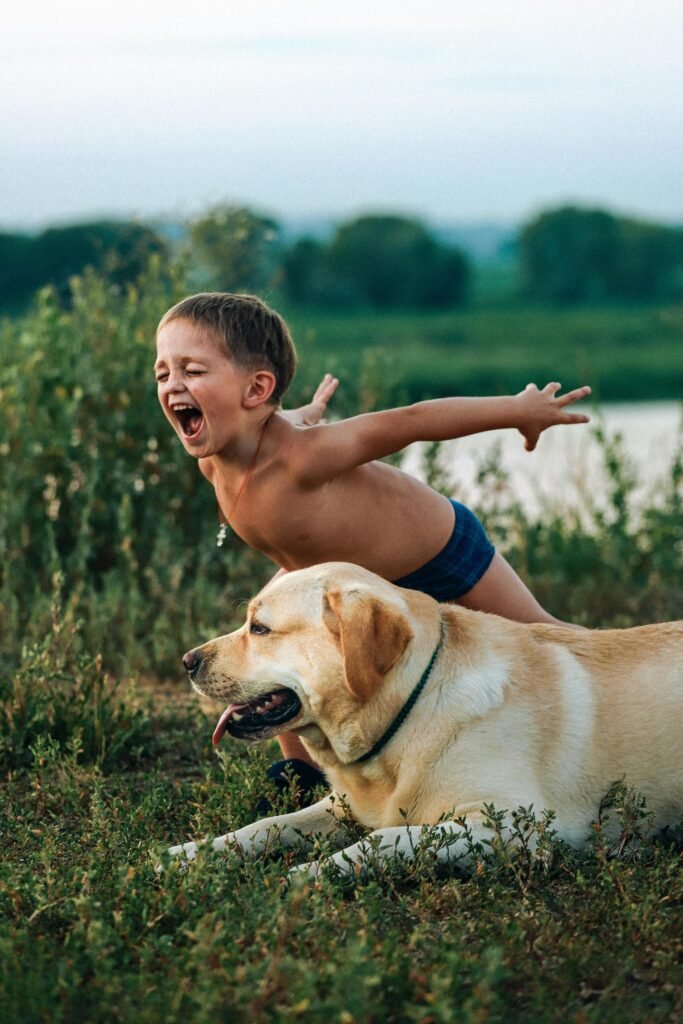Our beloved canine companions bring endless joy, but life can throw them curveballs, leading to anxiety and unwanted behaviors. Witnessing your dog stressed can be a helpless feeling. Fear not! This comprehensive guide delves into the world of canine anxiety, exploring its causes, signs, and most importantly, effective calming techniques.
Part 1: Understanding Canine Anxiety – Unveiling the Root of the Problem
- Identifying Triggers: The first step is understanding what triggers your dog’s anxiety. Common culprits include loud noises, separation anxiety, meeting new people or animals, travel, and changes in routine.
- Fear vs. Anxiety: While fear is a natural response to a perceived threat, anxiety is a more generalized, persistent feeling of unease or worry. Recognizing the difference helps tailor calming strategies.
- Signs of Anxiety: Look for changes in your dog’s behavior such as pacing, whining, destructive chewing, excessive licking, hiding, trembling, or potty accidents indoors.
- Medical Conditions: Sometimes, underlying medical issues can manifest as anxiety-like symptoms. Ruling out any medical causes through a vet visit is crucial before implementing calming techniques.
Part 2: Creating a Calm Environment – Setting the Stage for Relaxation
- Safe Haven: Provide your dog with a designated safe space, like a crate or a quiet corner, where they can feel secure and retreat to during stressful situations.
- Routine is Key: Establish a consistent routine for walks, meals, playtime, and alone time. This predictability helps your dog feel safe and secure.
- Desensitization and Counterconditioning: Gradually expose your dog to their triggers in a controlled environment and pair them with positive experiences. This helps them learn to associate the trigger with something pleasant rather than fear.
- White Noise or Calming Music: Background noise like white noise machines or classical music can mask startling sounds and create a more relaxing atmosphere.
Part 3: Calming Techniques in Action – A Toolbox for Tranquility
- Positive Reinforcement: Reward calm behavior with praise, treats, or petting. This reinforces calmness and teaches your dog what you expect.
- Exercise is Vital: Regular physical activity helps tire your dog out and release pent-up energy that can contribute to anxiety. Choose activities tailored to your dog’s age, breed, and fitness level.
- Calming Pheromones: Synthetic versions of dog appeasing pheromones can create a sense of calm and security, especially in situations like thunderstorms or vet visits.
- Supplements and Medications: Consult your veterinarian about natural supplements like L-theanine or chamomile, or in some cases, anti-anxiety medications, for severe anxiety cases.
Part 4: Beyond the Basics – Advanced Techniques for Stubborn Stress
- Desensitization Training: This involves gradually exposing your dog to their triggers in a controlled environment, starting at a low intensity and gradually increasing it while rewarding calm behavior.
- Counterconditioning: Pair your dog’s triggers with positive experiences. For example, if they’re scared of thunderstorms, play calming music and offer treats during a storm.
- Clicker Training: Clicker training can be a valuable tool for precise timing and reward-based calming techniques.
- Professional Help: Don’t hesitate to seek professional help from a certified animal behaviorist or trainer for severe anxiety cases that require customized strategies.
Part 5: A Journey of Patience and Love – Building a Calmer Future
- Calming a dog takes time, patience, and consistency. Celebrate small victories and avoid punishment for anxious behavior.
- Observe and adapt: Pay close attention to your dog’s individual responses and adjust calming techniques accordingly.
- Strengthen the Bond: Building a strong bond based on trust and positive reinforcement promotes a sense of security and reduces anxiety.
- Prevention is Key: Managing triggers and providing a predictable, enriching environment can help prevent future anxiety episodes.
Conclusion
By understanding the root of your dog’s anxiety, implementing a calming environment, and utilizing a toolbox of effective techniques, you can help your furry friend feel safe and secure, fostering a happier and calmer life together. Remember, this journey is a collaborative effort – with patience, love, and the right approach, you can guide your dog towards a calmer state of mind.

